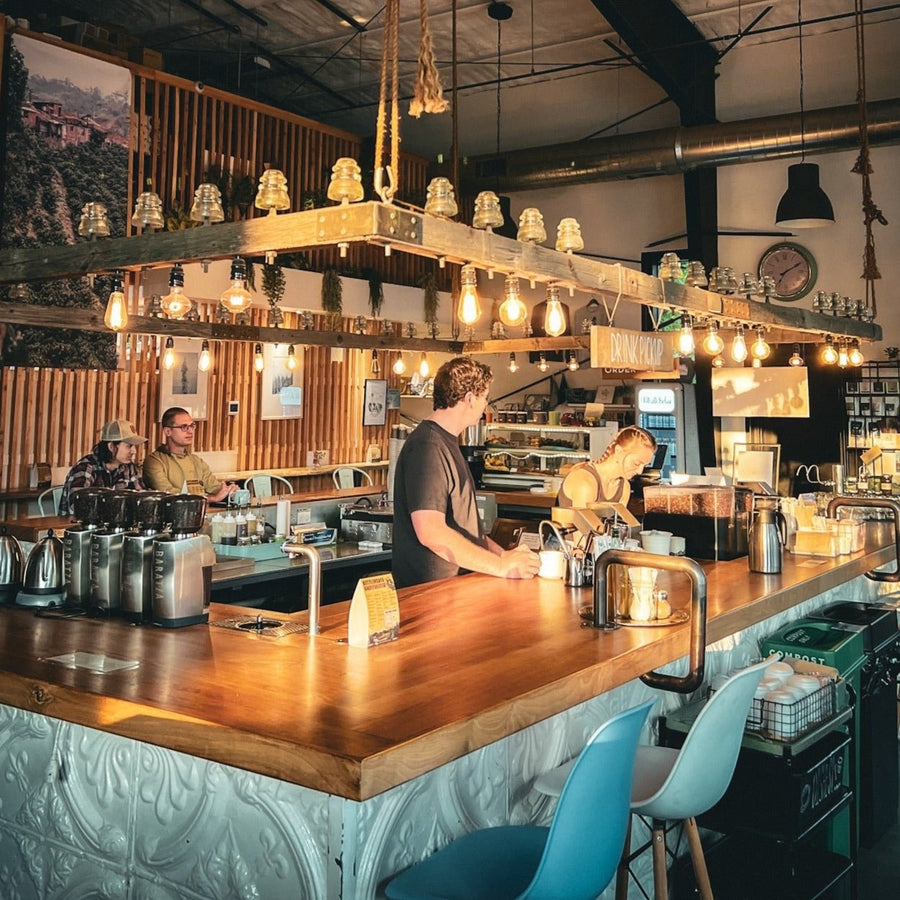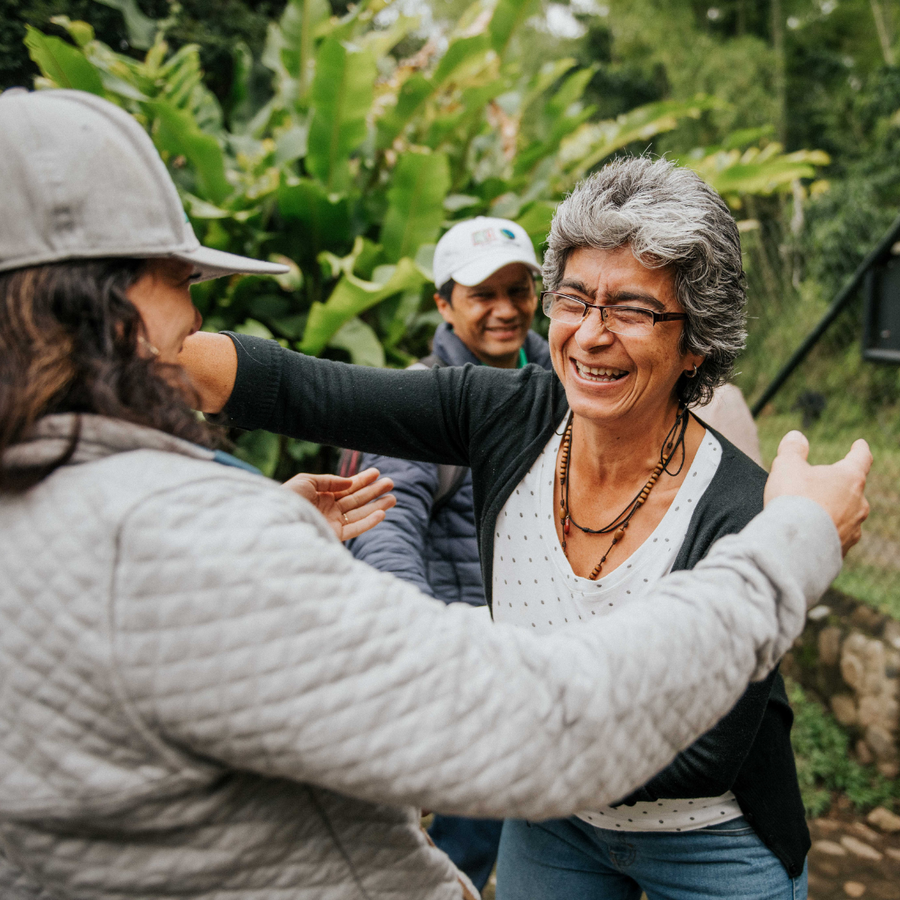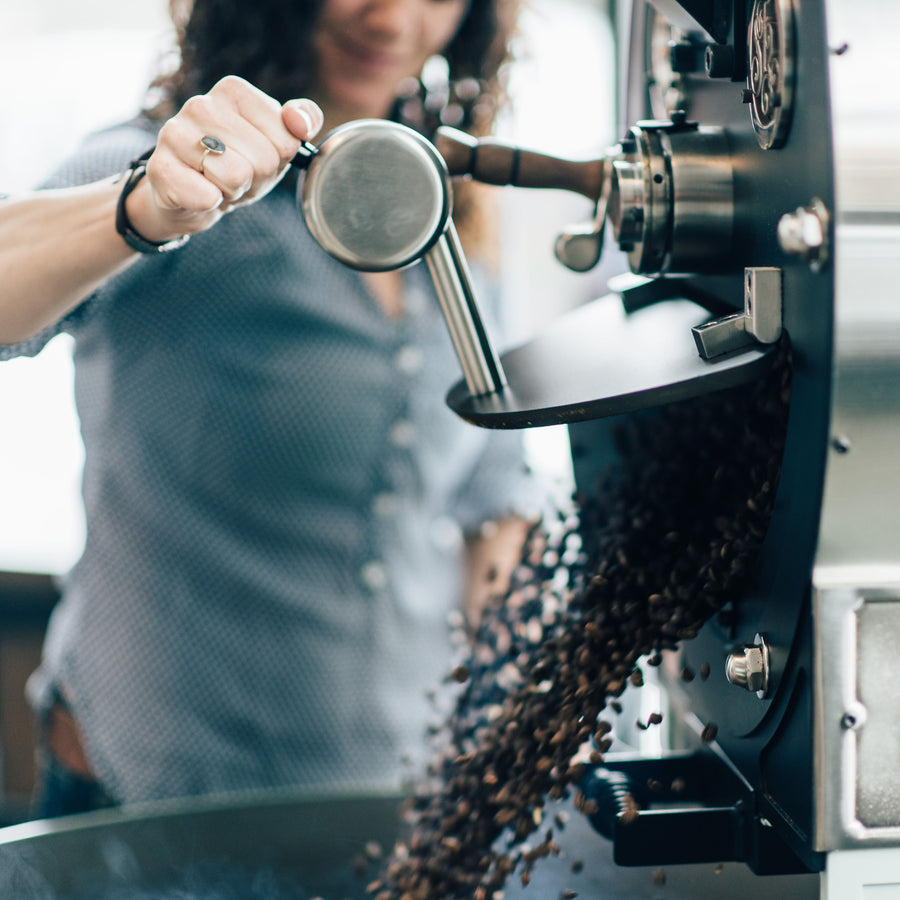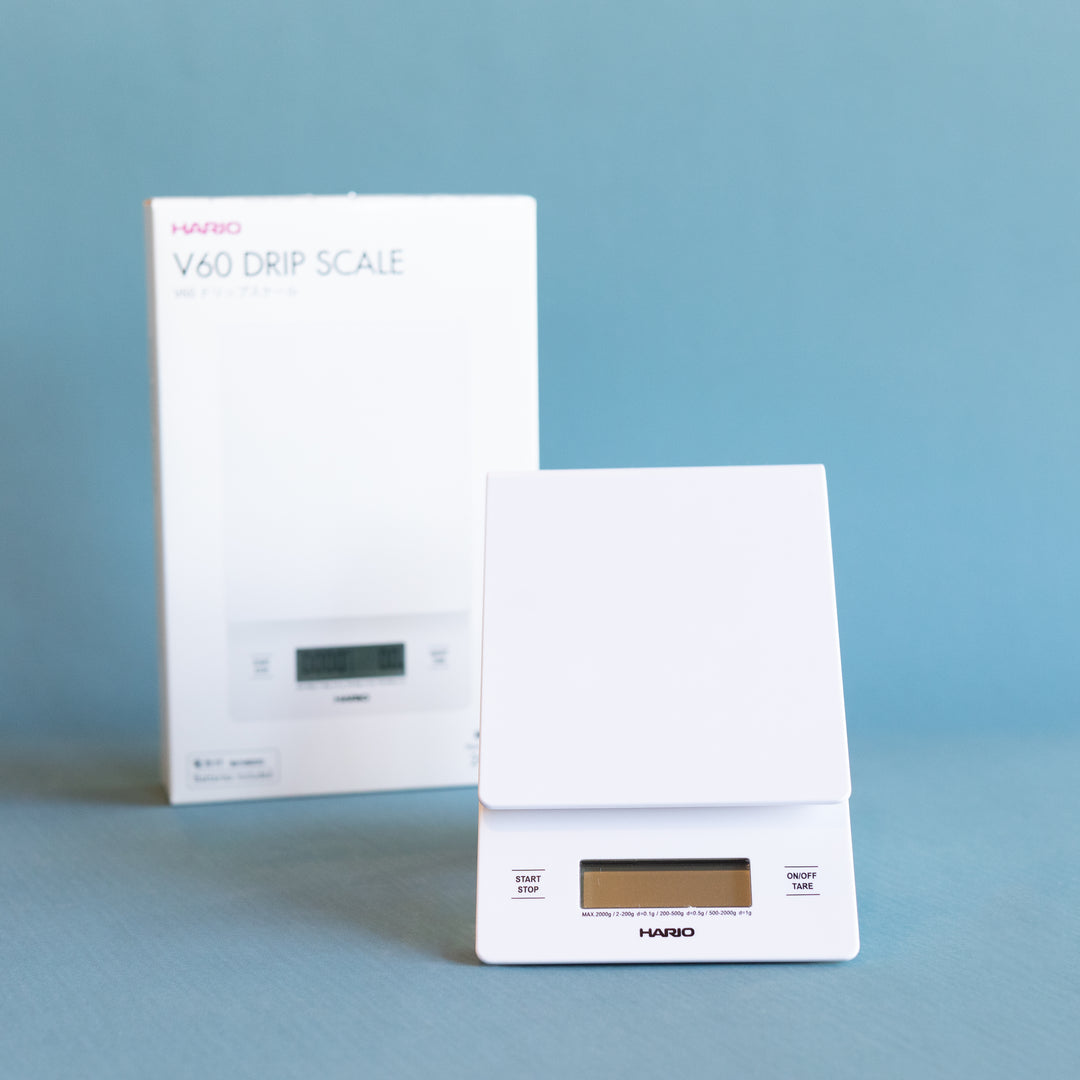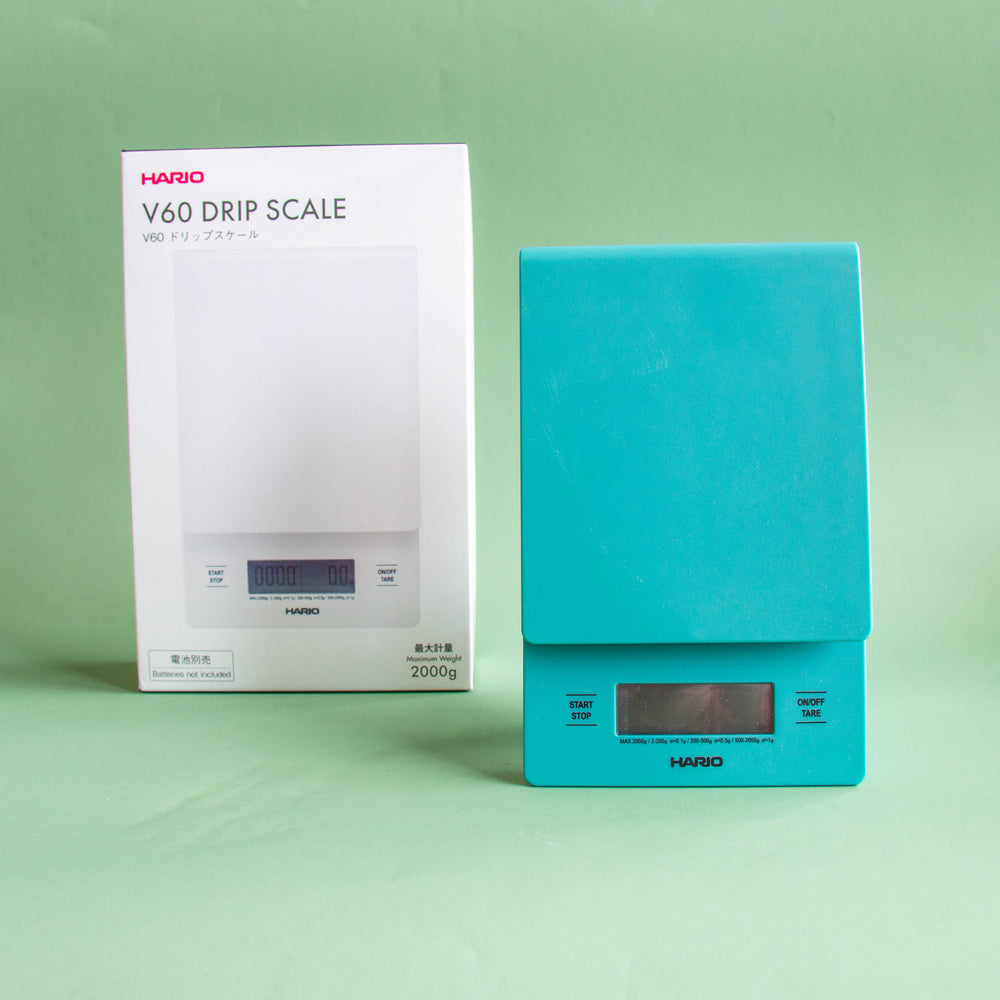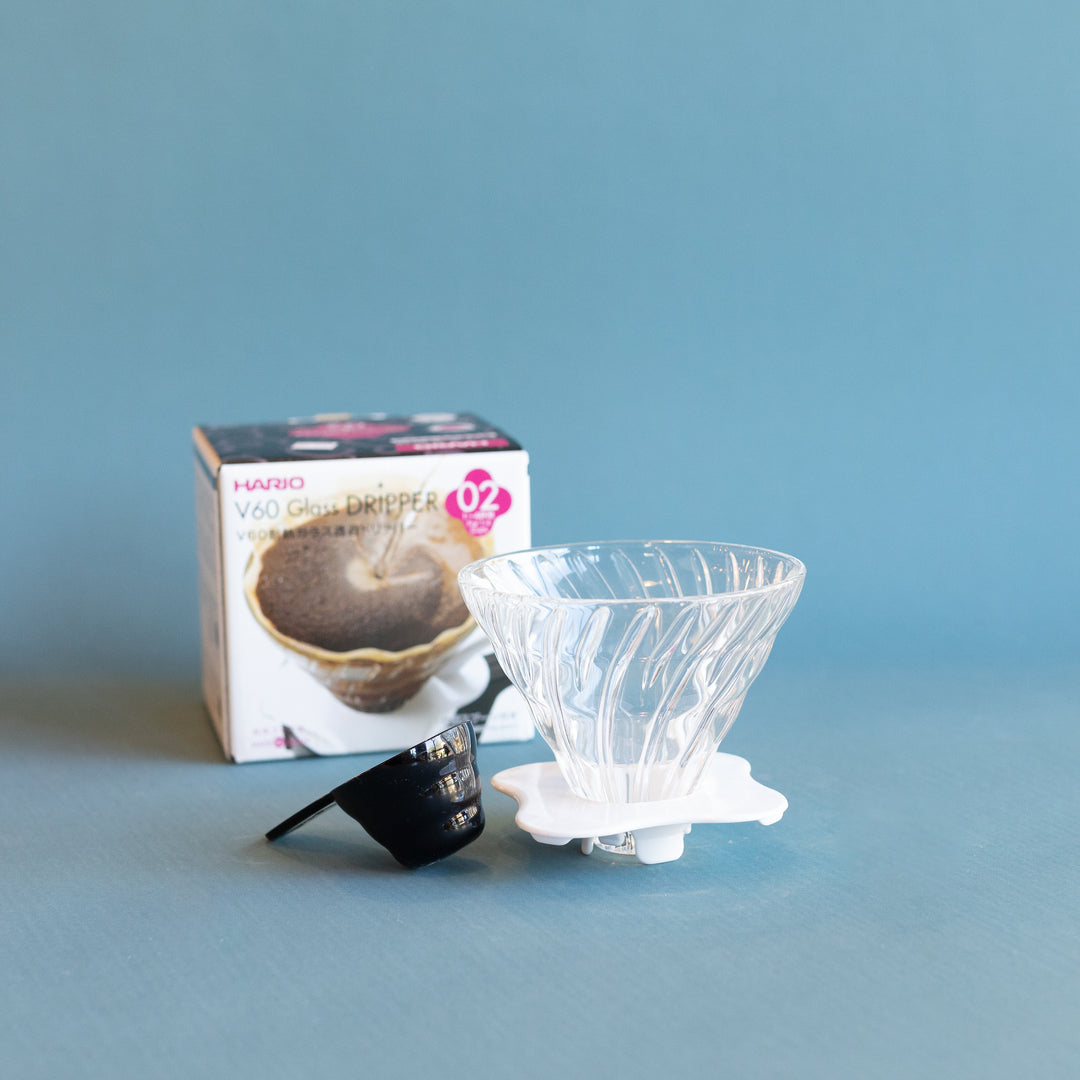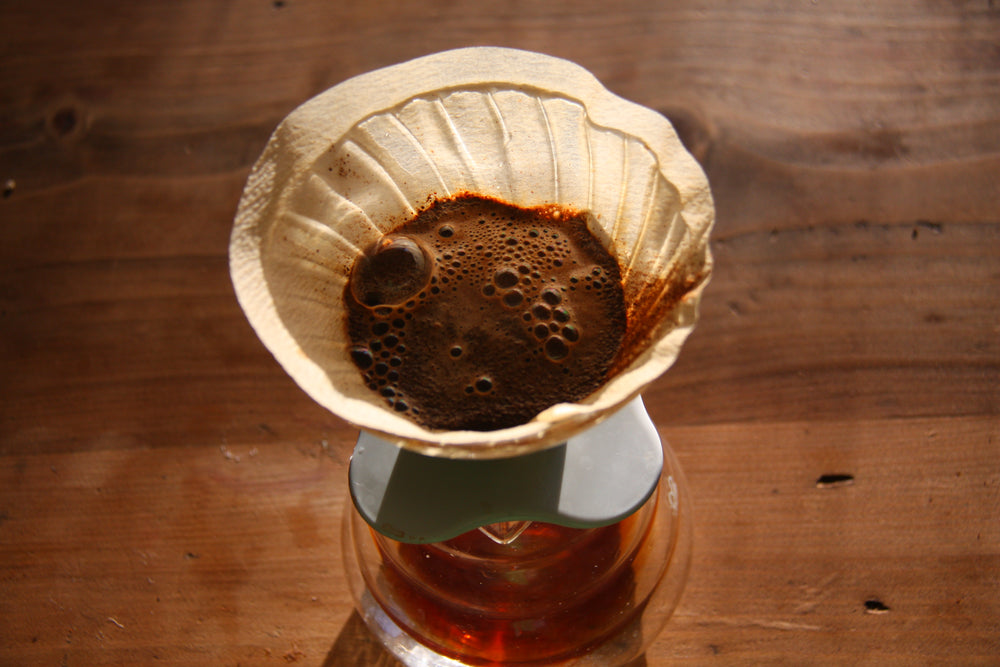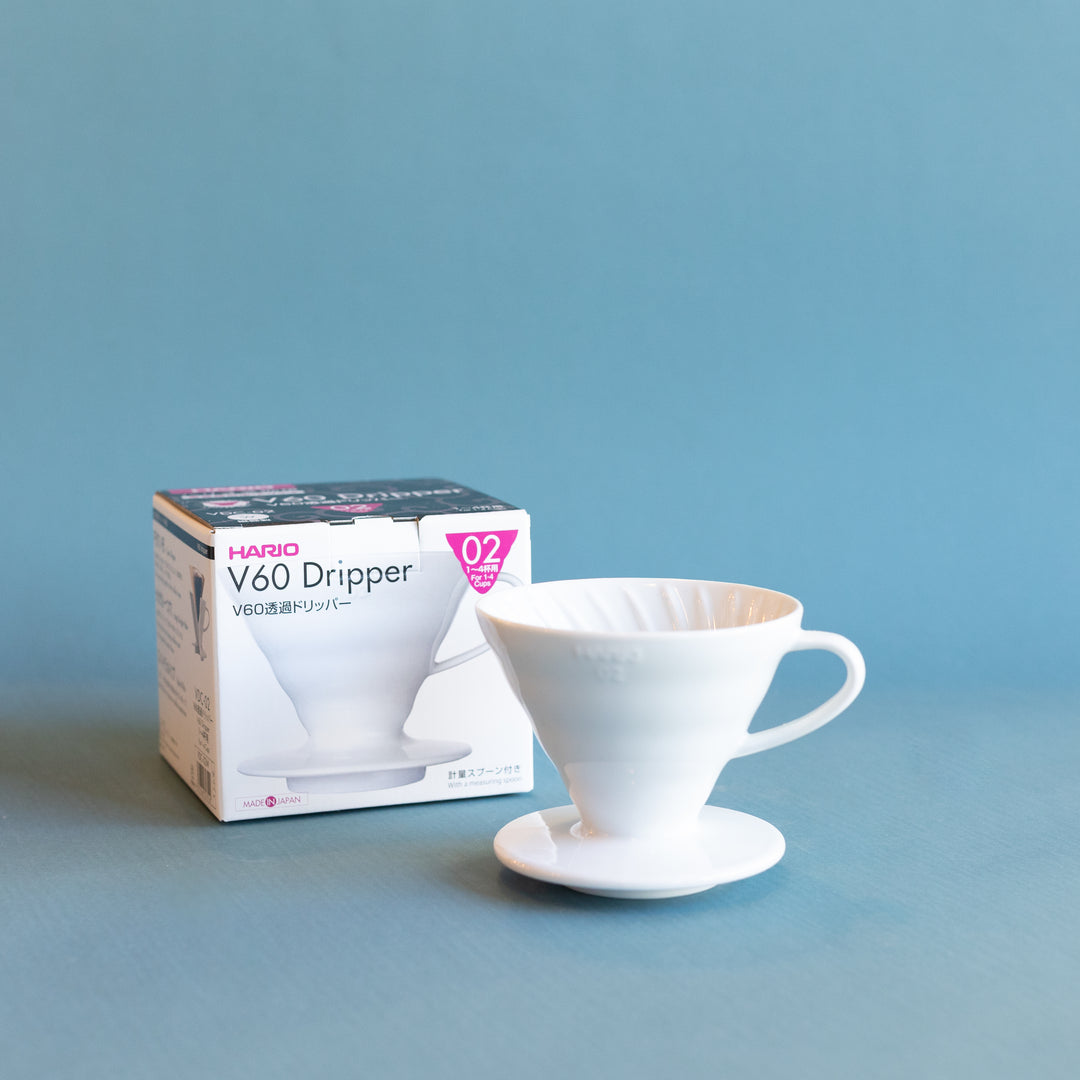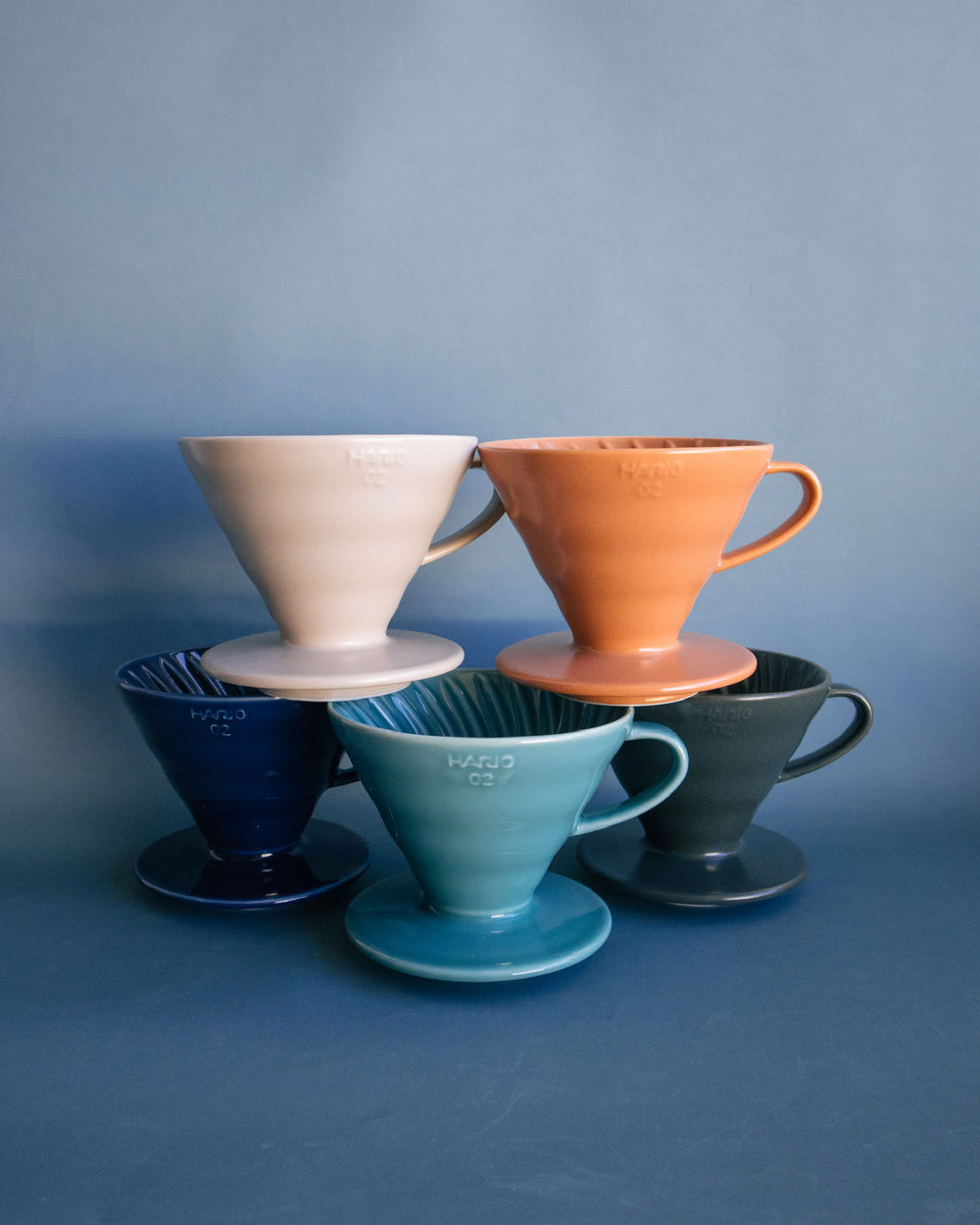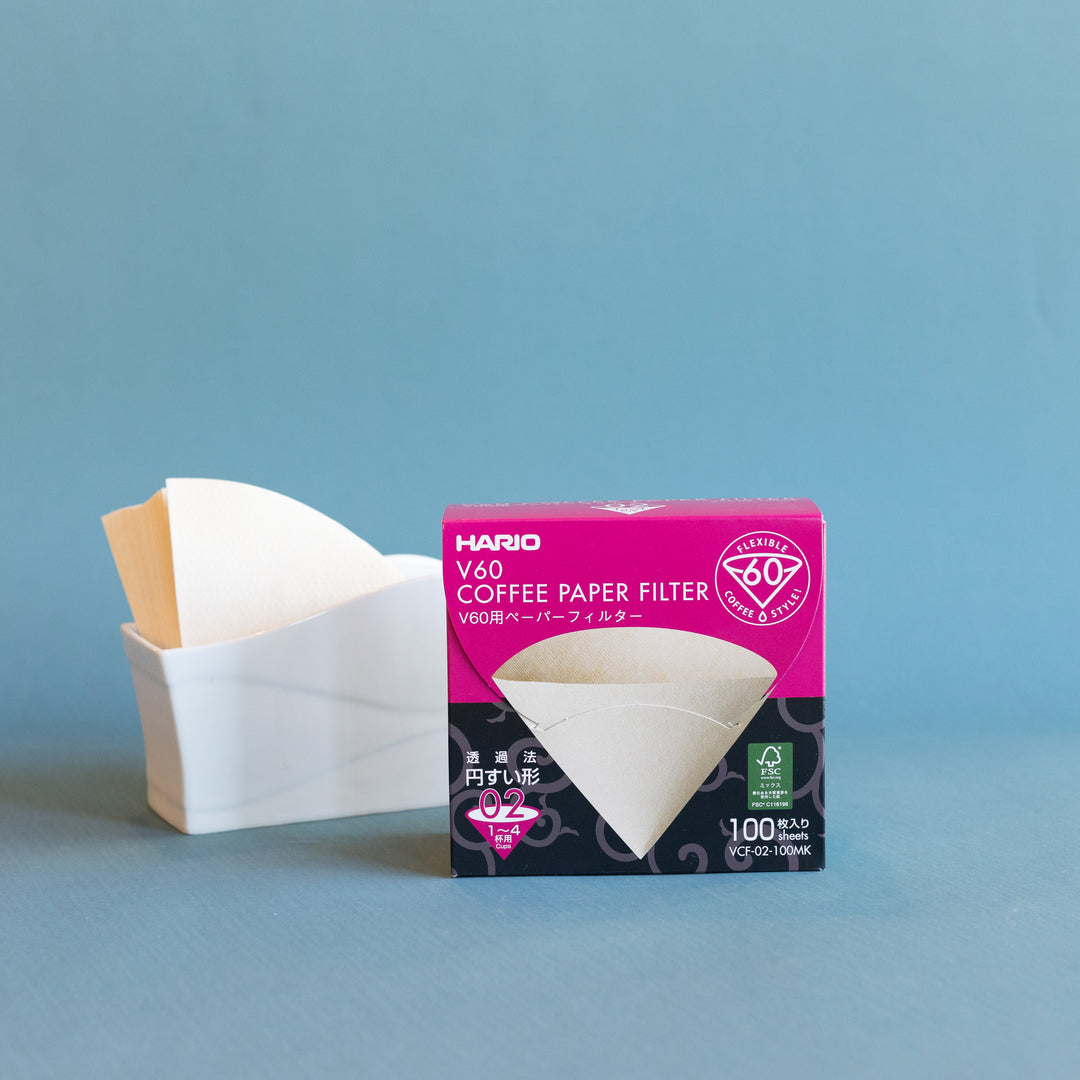TREELINE'S GUIDE TO COFFEE FRESHNESS
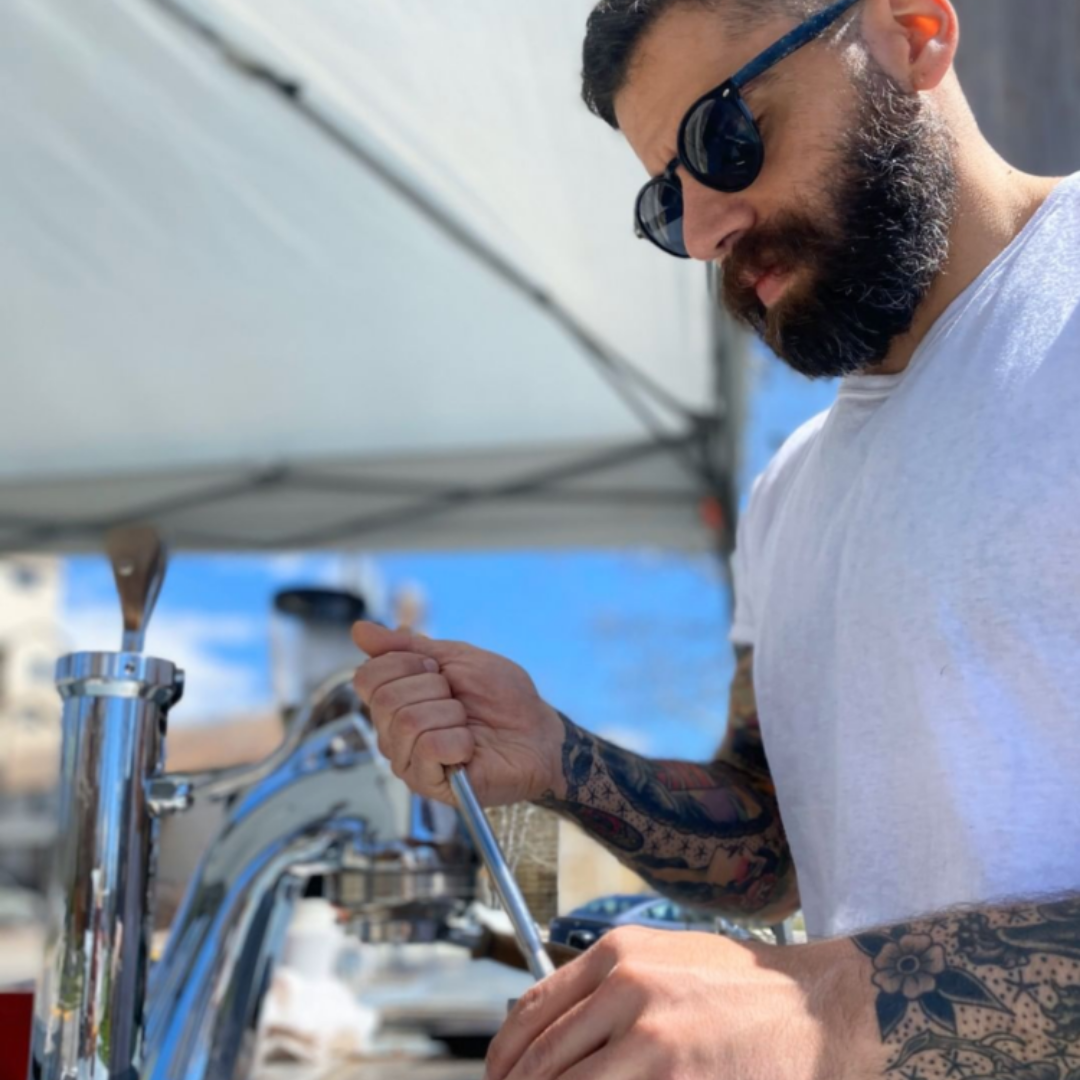
Hello! Dan here, your (somewhat) friendly neighborhood barista, and I’m here to talk to you about coffee freshness. We’ll have fun, I promise. Actually, I can’t promise that. You could close this article right now and watch a YouTube video of baby goats running around with pajamas on. That might be more fun, but it would be far less informative.
Alright, let’s get down to brass tacks:
- FOR PROPERLY STORED WHOLE BEAN COFFEE, IT’S GOING TO BE BEST BETWEEN 1 WEEK AND 3 MONTHS AFTER THE ROAST DATE.
- FOR PROPERLY STORED GROUND COFFEE, IT’S GOING TO BE BEST FOR UP TO 7-10 DAYS AFTER IT’S BEEN GROUND.
So those are the bullet points. If you’re still with me, let’s go into a little more detail. There’s a lot of myths when it comes to coffee freshness and storage, old baristas tales as I like to call them, and it is my distinct pleasure to be able to dispel some of those for you.
First of all, the big one: fresher is always better, right? Well, if you’re talking about Princes of Bel-Air, you’d be correct, but if you’re talking about coffee, it’s a little more complicated than that. A lot of customers, and even coffee professionals believe that in an ideal world they would scoop their hands into the roaster as soon as the beans drop, run to their coffee brewing station, take a deep breath (because running is hard), and brew the best damn cup of coffee in the world. That’s obviously an exaggeration, but I’ve found that most people believe that the closer to the roast date they brew their coffee, the better it’s going to be, and that’s not actually true. Immediately after coffee is roasted, it’s extremely volatile. It’s going to be gaseous, like you after a drunken Taco Bell binge. As soon as coffee beans come out of the roaster, carbon dioxide gas trapped inside the beans begins to release. This is a good thing, because too much gas in your coffee beans is going to affect the whole extraction and brewing process. The first seven days post-roast date your coffee is like a living organism. Please note that I said “like” a living organism, your beans aren’t alive, don’t feel bad for them. Think of it this way: in the week after roasting your beans are evolving, not getting stale. Kind of like Madonna in the 80s and 90s. It’s counter-intuitive, but because of how dynamic coffee is it’s always going to taste better after it’s had adequate time to rest. Can you brew a cup of coffee with beans roasted that same day? Absolutely, but a lot of the nuance and flavor in the cup isn’t going to be there.
This brings us to our next myth: coffee expires. I mean sure, eventually it does, even the sun has an expiration date on it, but it’s not like a gallon of milk that turns chunky and ruins your bowl of Cocoa Krispies. There’s no exact point in time when the coffee turns from good to bad, it’s more of a “best by”, and 3 months from the roast date is a good guideline. The degassing process I mentioned earlier happens very rapidly in the beginning, then slows down to a crawl, so if you’re storing your whole beans properly they’ll last a lot longer than you might think. I encourage you to experiment with this. Maybe coffee tastes best to you after 3 days, maybe it tastes best to you after a month. These time frames will also vary depending on the beans themselves. There are no rules here, only guidelines, so you might as well have some fun. I can give you an example from my (very exciting) life. Not too long ago I found some Treeline beans in a cupboard of mine that were 8 months old, and morbid curiosity drove me to brew it. I was expecting to do a spit-take, but was actually shocked at how good it still tasted. Now granted, I could tell it was getting a little long in the tooth, but it was still a very enjoyable cup of coffee. A lot of this comes down to proper storage, which we will go into next.
So I’ve got good news for you, storing your Treeline Coffee is super easy. Take it home, optionally cradling it like a precious treasure, set it on your counter, and...that’s it. Both our bags and jars have one way valves on them that allow carbon dioxide out while not allowing air in. Keeping your beans in their jar or bag is the best thing you can do for them. They are hermit crabs, and they want to stay in their shells. Easy, right?
It’s your coffee and your life, but there is no reason to put your beans in the fridge or freezer. In cold enough environments beans can crack, and while coldness does slow the aging process, when you take the coffee beans out of that cold environment and bring them into a warm one, condensation attacks them like they owe it money. So, you’re causing more damage to the structure of your coffee when you open a bag that’s cold in a warm environment than if you’d just left them on the counter. I’ve explained this to my parents at least a dozen times and they refuse to believe me, so hopefully you’re less stubborn. That said I don’t know your life, so if you happen to live in a walk-in freezer you can disregard this.

We always recommend grinding your coffee as soon as possible before brewing, whether you’re making a pour over, a French press, using a drip maker, an espresso machine, or just eating the grinds with a spoon; grinding fresh is always best. That kind of rhymes so it should be easy to remember. That said, not everyone has a grinder at home. If it’s within your budget I highly recommend buying one. It’s a game changer in terms of home brewing, and even if you’re not a coffee snob like me, I guarantee you’ll notice a difference.
My recommendation is getting a burr grinder. I don’t want to talk poorly about blade grinders and hand grinders, because a lot of people like them. With that said, they suck. Hand grinders are great if you’re in a tent in Siberia making an Aeropress, but for your kitchen setup I’d recommend the Encore by Baratza. It’s what I use at home, and it’s worth every penny. You can use it every day for years and it will keep on trucking. It’s like someone took the durability of a 90s Honda and slapped a Maserati engine in it. I make no money off of sales of our grinders, so I have no reason to lie to you, I just love the things that much.
If purchasing a grinder isn’t in the cards for you, we will happily grind your coffee for you in the shop. If you are buying coffee online simply specify in the drop down menu how you’d like it ground when you’re checking out. We use different grind settings for different brew methods, so just tell your barista how you’d like it ground and we’ll get to it lickety-split.
If you are having us grind your coffee, you’ve got less time to enjoy it than you would if you were grinding it at home, but I’m a glass half full kind of guy, and all that means is you have a legitimate excuse to drink more coffee. I’d recommend drinking it within a week, which is definitely possible if you believe in yourself. You can do this. That said, your ground coffee won’t turn into a pumpkin at midnight on the 7th day after its ground, but you might notice it start to degrade in quality. It’s not going to turn into poison, but it definitely won’t be as enjoyable.
So there you have it, all of my accumulated knowledge when it comes to coffee freshness. Thank you for taking this journey with me, I feel like we learned a lot, well I didn’t, but it was fun anyway. The last bit of wisdom I’d like to leave you with is this: coffee is meant to be fun, and it’s a very subjective experience, so play around with it! Find out what you think tastes best, and brew it that way. Like I said earlier, this is the Wild West, and you can do whatever the hell you want. Coffee is like Buddhism, there’s many paths to enlightenment. Or something like that.




